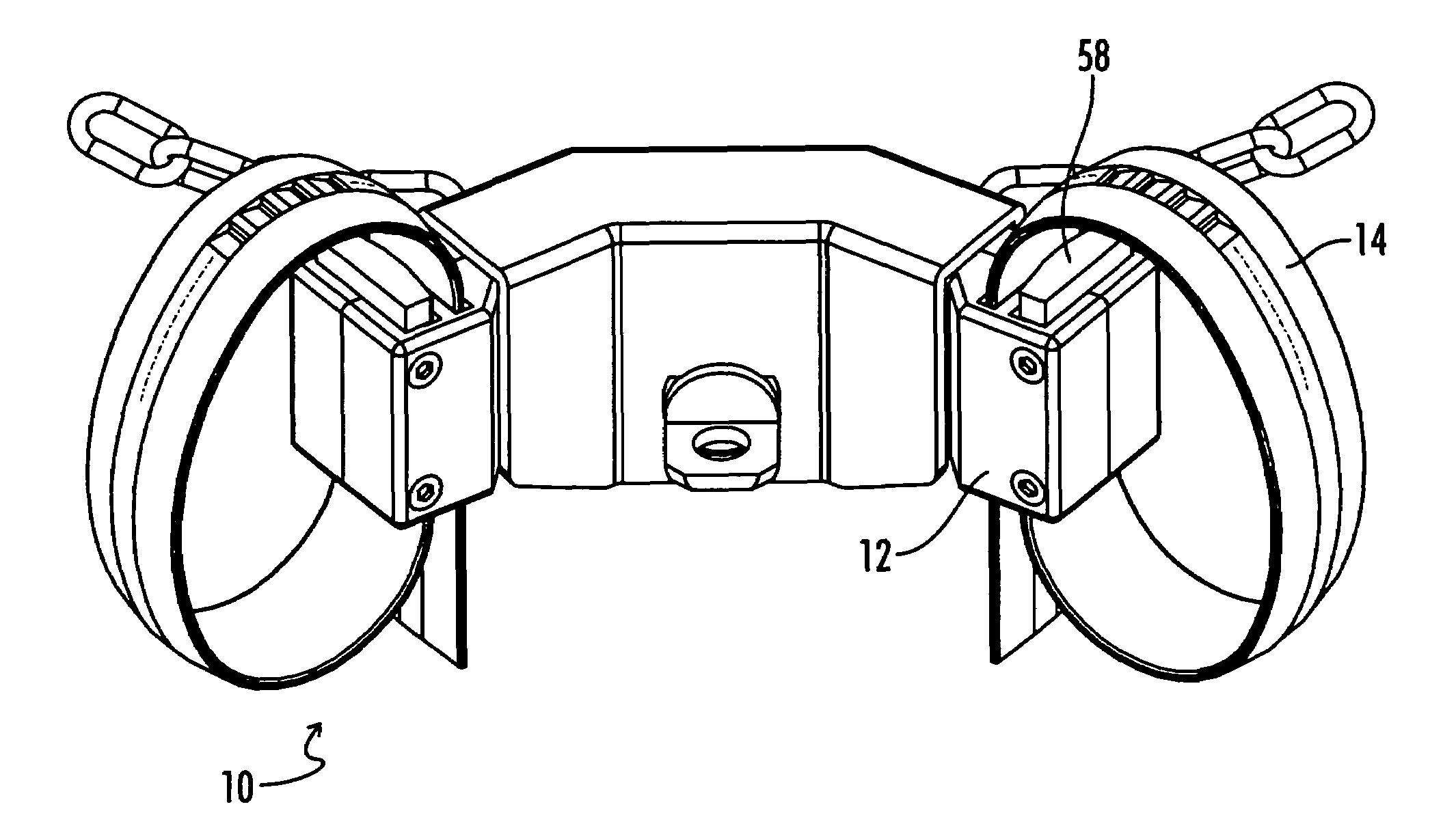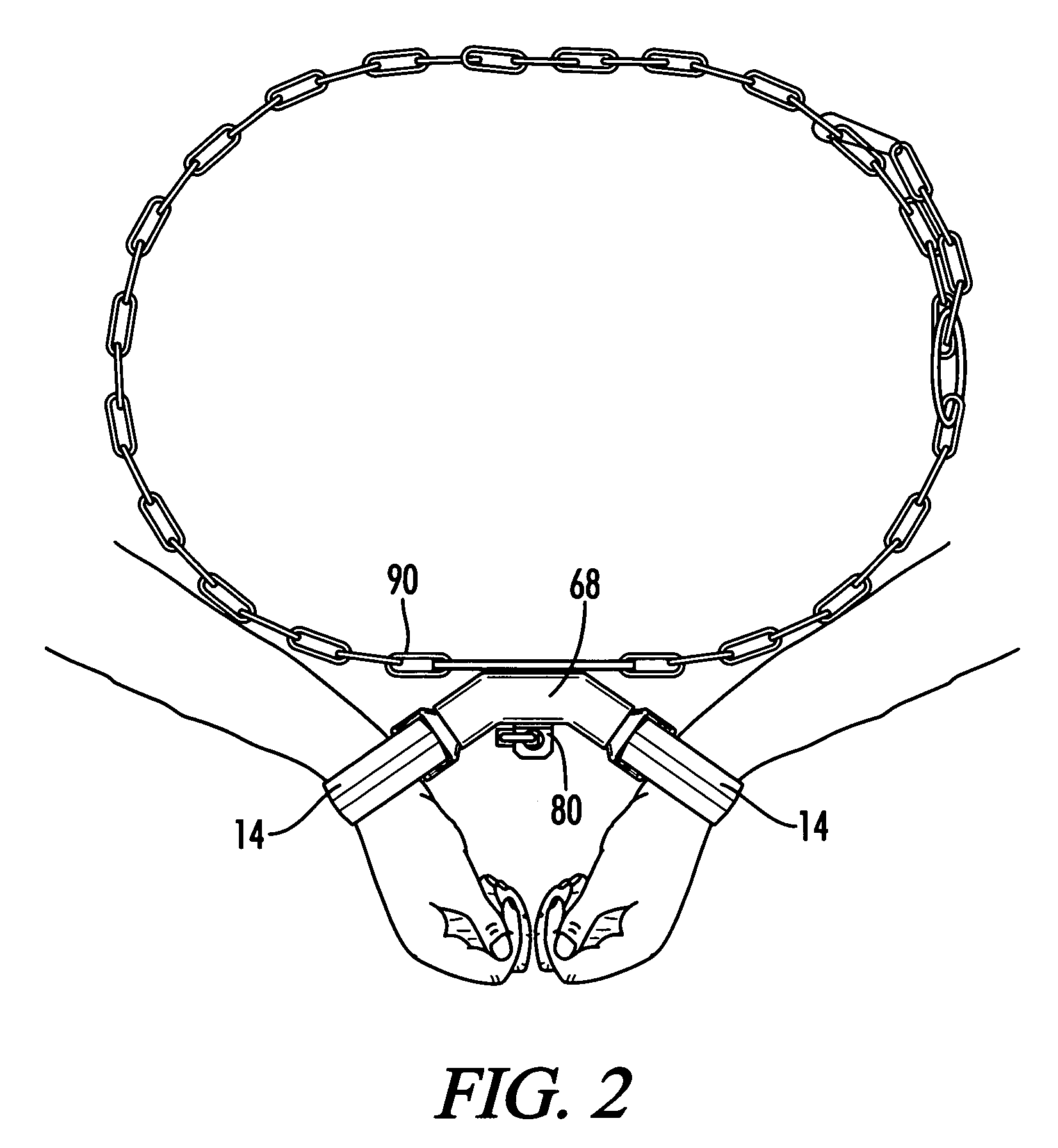Inmate transport restraint
a technology for restraints and inmates, applied in the field of human restraint devices, can solve the problems of inability to use restraints more than, inability to meet the needs of inmates, so as to reduce the physical fatigue and injury of restraint individuals, and achieve the effect of effective and secur
- Summary
- Abstract
- Description
- Claims
- Application Information
AI Technical Summary
Benefits of technology
Problems solved by technology
Method used
Image
Examples
Embodiment Construction
[0033]Referring now to the drawings, wherein like reference numerals refer to like parts throughout, the handcuff of the present invention is referred to as 10. As shown in FIGS. 1 and 9, the handcuff 10 comprises a housing 12 and a strap 14. The strap 14 passes through the housing 12 and forms a loop through which a person's hand or foot is passed so that the loop can be tightened around the wrist or ankle to restrain the person. The strap 14 may also be wrapped around a person's foot or hand and then secured with the housing 12. It is contemplated that the present invention would be useful in restraining inmates as well as restraining persons in medical, psychiatric or other settings where restraint is necessary.
[0034]Referring now to FIG. 9, the housing 12 is comprised of a front plate 24 and a rear plate 26. In the preferred embodiment, the housing 12 is constructed from impact plastic or 7075 aluminum. The tension spring 36, lift cam 38 and pin 44 fit inside the housing 12. In ...
PUM
 Login to View More
Login to View More Abstract
Description
Claims
Application Information
 Login to View More
Login to View More - R&D
- Intellectual Property
- Life Sciences
- Materials
- Tech Scout
- Unparalleled Data Quality
- Higher Quality Content
- 60% Fewer Hallucinations
Browse by: Latest US Patents, China's latest patents, Technical Efficacy Thesaurus, Application Domain, Technology Topic, Popular Technical Reports.
© 2025 PatSnap. All rights reserved.Legal|Privacy policy|Modern Slavery Act Transparency Statement|Sitemap|About US| Contact US: help@patsnap.com



